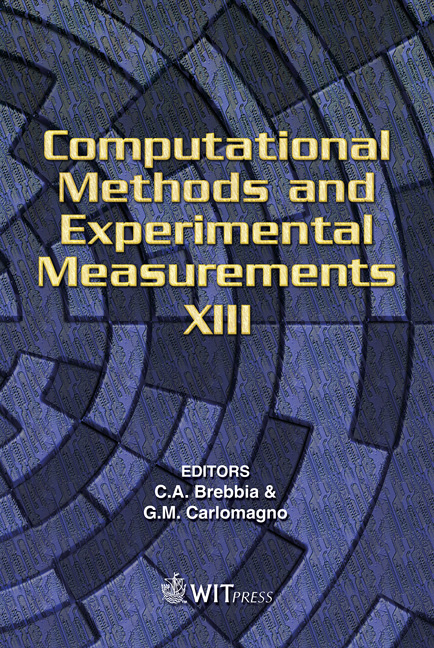The Areolar Strain Concept Applied To Elasticity
Price
Free (open access)
Transaction
Volume
46
Pages
10
Published
2007
Size
354 kb
Paper DOI
10.2495/CMEM070581
Copyright
WIT Press
Author(s)
I. D. Kotchergenko
Abstract
In contrast to the books that start with solutions of Lamé-Navier equations using complex variables, the present article starts with a presentation of the fundamentals of the complex theory of two-dimensional elasticity. A new strain expression is derived and the compatibility conditions for these strains are given. The fundamental equations for the isotropic and orthotropic plane elasticity are also presented in somewhat new complex forms. The homogeneous equilibrium equation is presented in a complex form that proved to be easily solvable. Kolosov’s general solution for the isotropic case is obtained in a fairly straightforward fashion. New equilibrium equations and boundary conditions for finite rotation are also given. Keywords: areolar strain, compatibility equation, finite rotation, complex elasticity. 1 Introduction The development of the theory of two-dimensional elasticity hereof is grounded on the concept of areolar strain. This concept was first presented by Kotchergenko [8], in 1983, though containing some errors. In this approach the strain is obtained by the division of two complex-valued quantities associated with 2D vectors and called areolar strain owing to the fact that its real part represents a radial strain and its imaginary part represents either a circumferential strain or a rotation. The quaternion concept can probably be used to extend the areolar strain concept to the 3D vectors case. Improvements on the linear theory were recently presented, Kotchergenko [9,10]. Equilibrium equations for finite rotation and several other improvements are now included. A detailed review of the main results obtained until now is provided in order to make this article self contained.
Keywords
areolar strain, compatibility equation, finite rotation, complexelasticity.





